Idiosyncratic and highly accomplished, Lorenzo Lotto (c. 1480–1556/57) can be counted as one of the most fascinating of all Renaissance portrait painters. His name and achievement, however, remains largely unfamiliar to many and so the National Gallery’s fine exhibition on this aspect of the artist’s work will have come as a revelation. It is a reduced version of a larger show seen at the Prado in Madrid in 2018 and is very generously, in view of the richness of the loans, presented in London as a free, unticketed display. Lotto’s status as an artist of extraordinary skill whom you may not have heard of is in part explained by the provincial nature of his practice, as he worked so much away from major centres. His paintings are also often quirky and enigmatic and sometimes carry complex messages; the challenge to decode them though is precisely why they are so riveting. This, in combination with his abilities as a subtle colourist and deft student of the human condition, endows his portraits, many of which allow direct, enquiring eye contact with their sitters, with immense appeal for a modern viewer.
Lotto was born in Venice and absorbed early the influence of Giorgione and Giovanni Bellini; their spell would remain with him throughout this life, although he was to form his own distinctive visual language, often featuring dramatic, angular gestures and poses, congested compositions, and details of still life with a specificity that makes them look Netherlandish. He built a reputation chiefly for painting altarpieces and smaller devotional works in oil, as well as portraits, and occasionally worked in fresco, while also creating designs for intarsia. It was the prospect of finding new sources of commissions that inspired his travels; as a result he painted in Treviso, Le Marche, Rome, Bergamo, Venice, Ancona, and ultimately Loreto. Part of the fascination of Lotto’s portraiture lies not only in its geographical spread, but also its social breadth, as he came to work for aristocrats, prelates, merchants, craftsmen and connoisseurs. His subjects included individuals, couples, families and children – and so also provide a rich seam for social and dress historians.
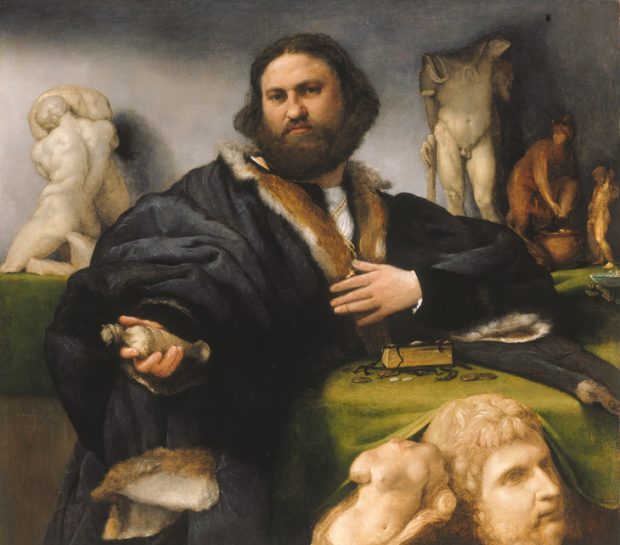
Andrea Odoni (1527), Lorenzo Lotto. Royal Collection Trust; © HM Queen Elizabeth II 2019
Key works that allow the exploration of the world he inhabited include the wonderful portrait of Andrea Odoni in the Royal Collection, which was painted in Venice in 1527. One of the great collector portraits of the early 16th century, it is both celebratory and gently troubling. Odoni was a wealthy merchant who built a renowned collection of paintings, antiquities, and marvels of natural history. Here his pride in his acquisitions of sculptures is explored, as he is surrounded by versions of well-known ancient works, most of which are identifiable. He holds a stauette of Diana of Ephesus, while also toying with a small crucifix. What might we conclude from this curious detail? Perhaps that both sitter and artist are subtly commenting on the lure of pagan art in a Christian age? The painting, like so many of Lotto’s portraits, sets up questions and debates and conveys a slight sense of unease. It is possible to imagine it always having done this – Odoni’s circle included learned men like the writer Pietro Aretino, who no doubt discussed issues of art and taste with him. The personal significance of Odoni’s picture becomes even more compelling when you learn it was first recorded in 1532 as hanging in his bedroom.
Lotto’s portraits are so allusive and indeed elusive that whole novels might be spun from them. They rarely seem to be merely commemorative. The Portrait of a Man with a Lizard (1530–32) from the Accademia in Venice is a case in point: its subject has a number of suggestive and potentially allegorical objects beside him, the most striking of which is the reptile – is it a reference to his temperament, a heraldic device, a pet, a nod to a wider appreciation of the natural world on the part of the young, bookish man, or just a creature that scuttled across the table during a long, quiet sitting? Whichever is the case, it’s fascinating to have this provocative painting briefly in the same building as Caravaggio’s Boy Bitten by a Lizard of the 1590s, which is usually regarded as an exploration of the senses.
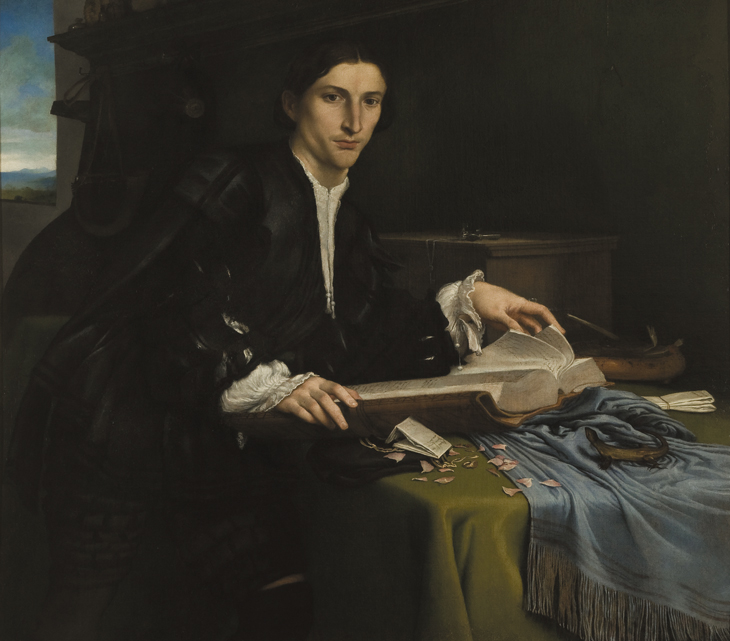
Portrait of a Man with a Lizard (1530–32), Lorenzo Lotto. Galleria dell’Accademia, Venice Photo: © Archivio fotografico Gallerie dell’Accademia, su concessione del Ministero dei beni e delle attività culturali e del turismo
The National Gallery’s own splendid Portrait of a Woman inspired by Lucretia (c. 1530–33) by Lotto again allows one to play a guessing game of references and meanings, in this instance revolving around the virtue of the Roman heroine who committed suicide following the dishonour she felt after she was raped. As an exemplar of chastity and moral integrity Lucretia had been depicted many times before – but why include a drawing of her in this context? It may be a reference to the sitter’s name, and possible Venetian noble candidates are discussed in the substantial and discursive catalogue which accompanies the exhibition.
For an artist like Lotto who was such an inventive and impressive painter there is a sadness about the latter stages of his life, as taste shifted and his works, which were once so highly prized, became less valued; a number of paintings he tried to sell in the early 1550s failed to find a buyer and his last portraits undoubtedly have a melancholic quality. A degree of solace was however evidently achieved when he became a lay brother at the Holy House at Loreto. For a man of religious sensibility this was an appropriate context to end his days. Giorgio Vasari paid Lotto little attention and so the rehabilitation of his reputation has been driven chiefly by modern scholarly endeavours. These were initiated by Bernard Berenson and in recent years have been led by Peter Humfrey. This thought-provoking exhibition will undoubtedly play a key role in reaffirming his rightful place as a major although complex figure in the cultural life of 16th-century northern Italy.
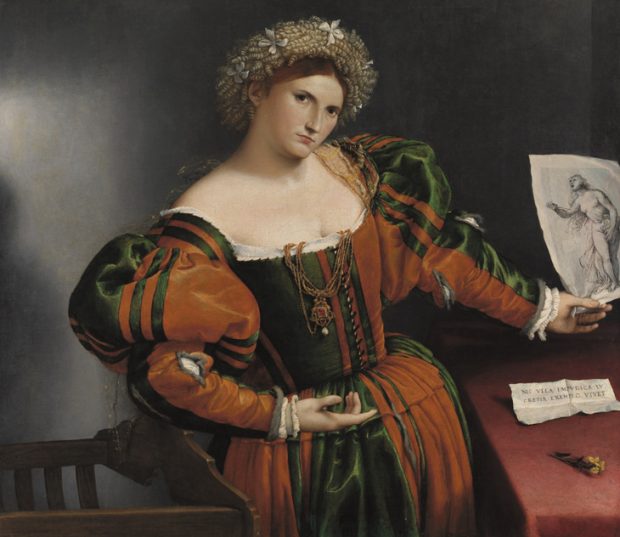
Portrait of a Woman inspired by Lucretia (c. 1530-33), Lorenzo Lotto. National Gallery, London. Photo: National Gallery, London.
‘Lorenzo Lotto Portraits’ is at the National Gallery, London until 10 February 2019.
From the February 2019 issue of Apollo. Preview and subscribe here.
Unlimited access from just $16 every 3 months
Subscribe to get unlimited and exclusive access to the top art stories, interviews and exhibition reviews.

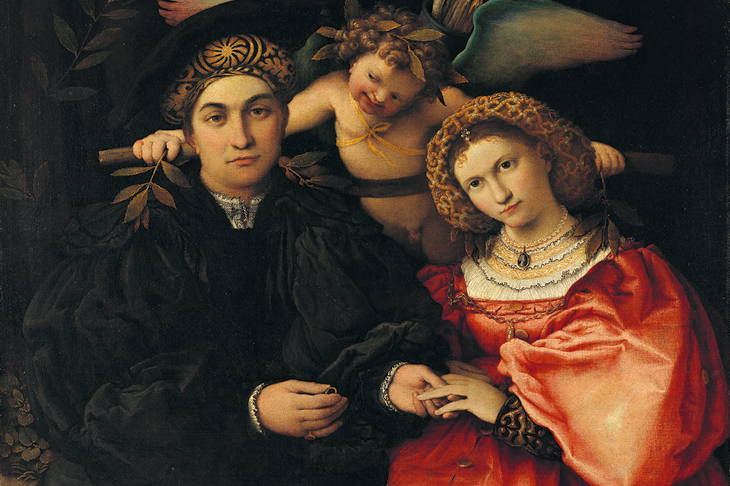
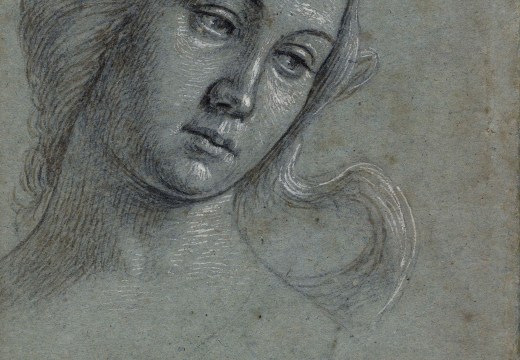
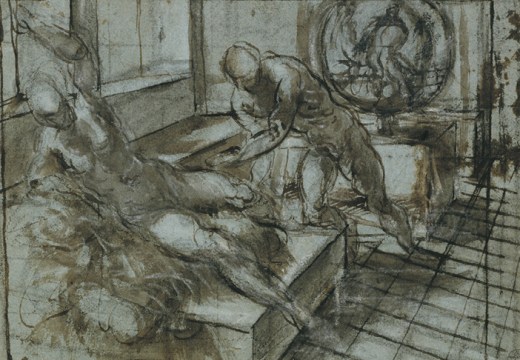










![Masterpiece [Re]discovery 2022. Photo: Ben Fisher Photography, courtesy of Masterpiece London](http://www.apollo-magazine.com/wp-content/uploads/2022/07/MPL2022_4263.jpg)
Why are fathers so absent from art history?